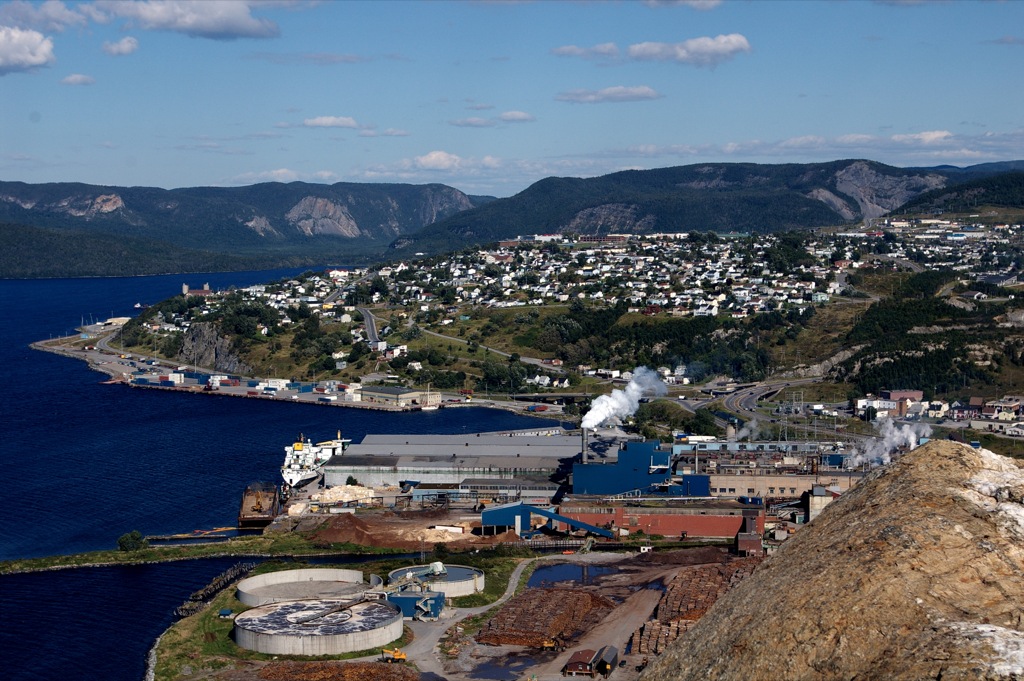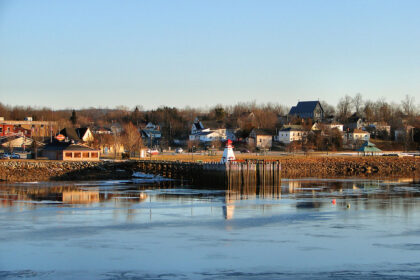Corner Brook (2016 population: 19,806 CA 31,917) is a city located on the west coast of the island of Newfoundland in the province of Newfoundland and Labrador, Canada. Take a look below for 30 awesome and fun facts about Corner Brook, Newfoundland And Labrador, Canada.
1. Located on the Bay of Islands at the mouth of the Humber River, the city is the second-largest population centre in the province behind St. John’s, and smallest of three cities behind St. John’s and Mount Pearl.
2. As such, Corner Brook functions as a service centre for western and northern Newfoundland.
3. It is located on the same latitude as Gaspé, Quebec, a city of similar size and landscape on the other side of the Gulf of St. Lawrence.
4. Corner Brook is the most northern city in Atlantic Canada.
5. It is the administrative headquarters of the Qalipu Mi’kmaq First Nations band government.
6. The Mi’kmaq name for the nearby Humber River is “Maqtukwek”.
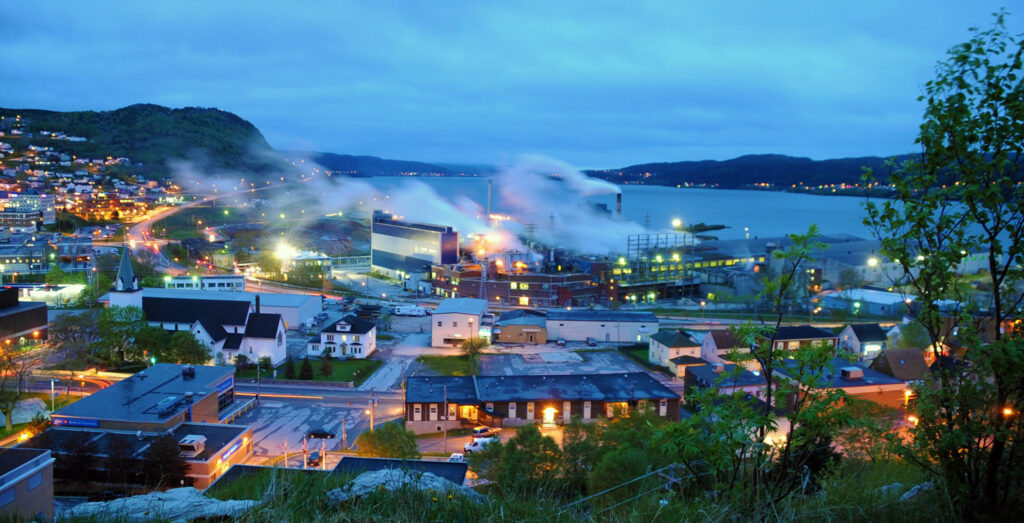
7. The area was surveyed by Captain James Cook in 1767. The Captain James Cook Historic Site stands on Crow Hill overlooking the city.
8. By the middle of the 19th century the population of Corner Brook was less than 100, and the inhabitants were engaged in fishing and lumber work.
9. The area was originally four distinct communities, each with unique commercial activities: Curling, with its fishery; Corner Brook West (also known as Humber West or Westside) with its retail businesses; Corner Brook East (also known as Humbermouth and the Heights) with its railway and industrial operations; and Townsite (known as Corner Brook) to house employees of the pulp and paper mill, laid out in 1923 by Thomas Adams using Garden City principles.
10. In 1956, these four communities were amalgamated to form the present-day City of Corner Brook.
11. Between 1948 and 1958 about 70 people from Latvia and Germany settled in Corner Brook.
12. They came as part of then Premier Joseph Smallwood’s New Industries program.
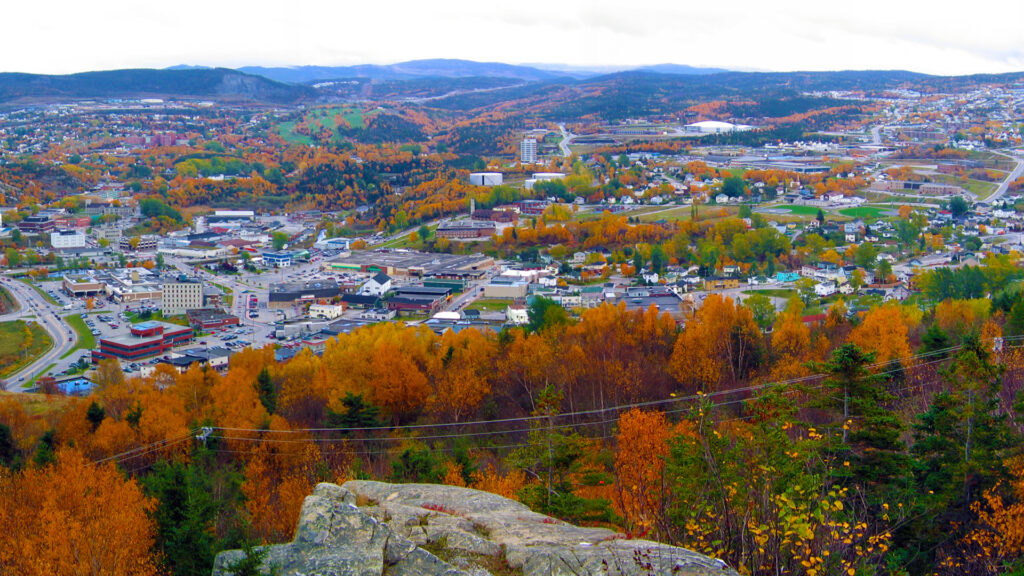
13. They built and worked at North Star Cement and the Atlantic Gypsum Plant.
14. Corner Brook is home to the Corner Brook Pulp & Paper Mill (owned by Kruger Inc.), which is a major employer for the region.
15. The city has the largest regional hospital in western Newfoundland. It also has a wide array of shopping and retail businesses and federal and provincial government offices.
16. It is home to Grenfell Campus, Memorial University, as well as campuses of Academy Canada and College of the North Atlantic.
17. Corner Brook is also home to the province’s newest high school, Corner Brook Regional High, which is an amalgamation of the former Regina and Herdman Collegiate high schools.
18. Corner Brook celebrated its Come Home Year from July 19–28, 2019.
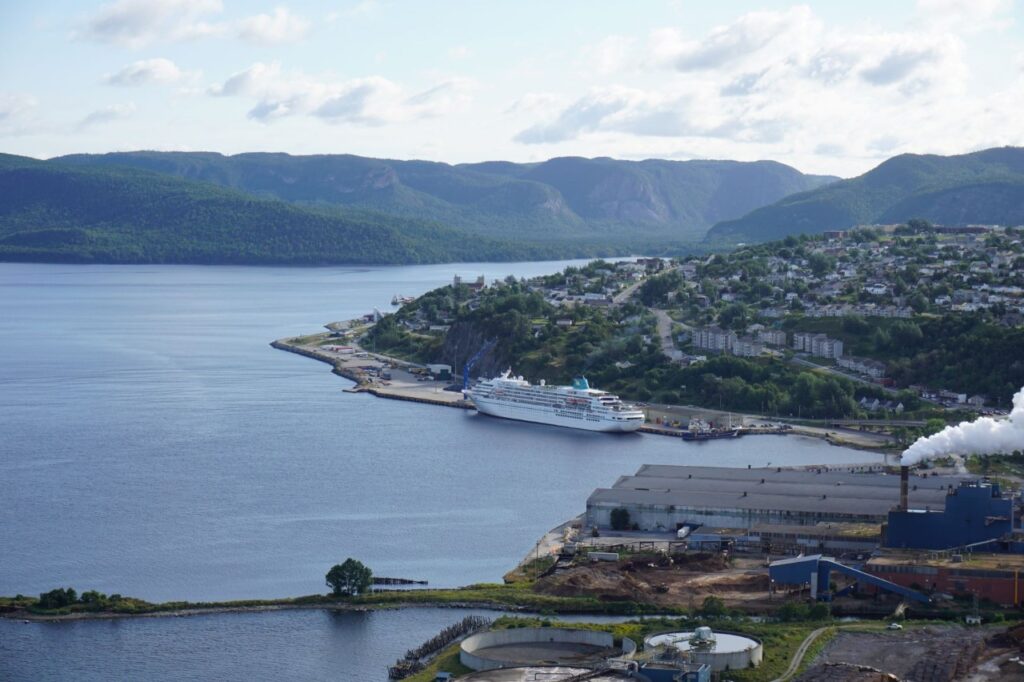
19. Near Corner Brook is Marble Mountain Ski Resort, a downhill skiing resort, and Blow-Me-Down trails, a cross country ski area.
20. The Corner Brook Royals currently play in the West Coast Senior Hockey League and were the winners of the 1986 National Title, the Allan Cup. The Royals play their home games at the Corner Brook Civic Centre, formerly the Canada Games Centre. The arena was built in 1997 and was one of the main venues used when the city of Corner Brook hosted the 1999 Canada Games.
21. Corner Brook was host of the Special Olympics Provincial Winter Games in February, 2011. The city also twice hosted Raid the North Extreme, a televised 6-day multi-sport expedition race held in wilderness locations across Canada, and was a leg of the ITU World Cup Triathlon.
22. In 2004, Corner Brook hosted the annual World Broomball Championship.
23. Corner Brook is home to Grenfell Campus, Memorial University where a strong arts community exists both within the school and well into the public. The campus houses the Grenfell Art Gallery.
24. The Corner Brook Arts and Culture Centre among other institutions thrive in promoting the arts on all levels from visual arts to theatre and well beyond. In 2015, the City’s newest theatre and gallery, the Rotary Arts Centre opened.
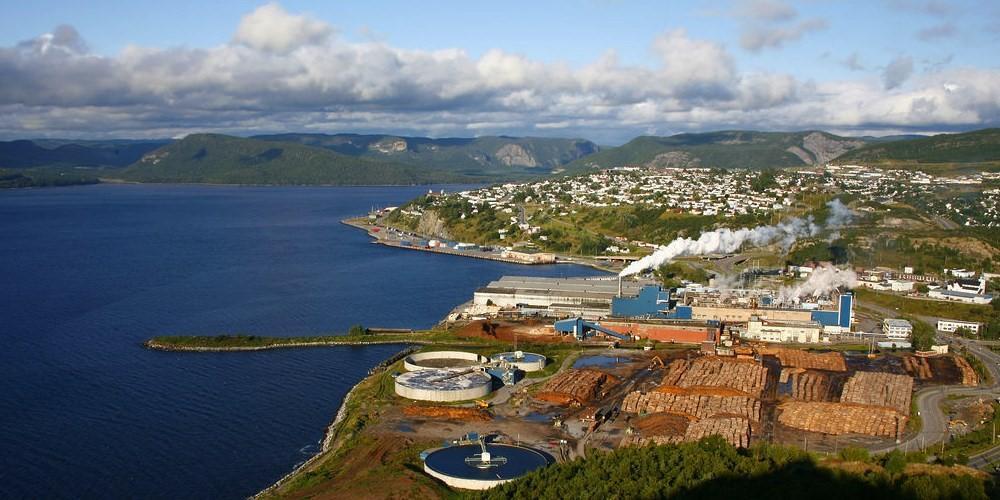
25. Theatre Newfoundland Labrador is Corner Brook’s professional theatre company: founded in 1979 by the late Maxim Mazumdar, it operates a year-round professional theatre company from its home base, Corner Brook. From September to May, their Sarah McDonald Youth Theatre offers classes in acting, stagecraft and music to youth aged 6 to 8 and produces a number of youth and community oriented productions in and around the city.
26. From May to September it produces a professional repertory summer festival in Cow Head, Gros Morne National Park and regular national and international touring of plays like Tempting Providence by Robert Chafe, With Cruel Times in Between by Sarah McDonald, based on the various works by Al Pittman and Our Frances by Berni Stapleton.
27. Corner Brook is home to Gros Morne Summer Music, a classical music festival that spans July and August.
28. For 32 years, the March Hare literary festival ran every March and celebrated poetry and written works by poets and writers from around Newfoundland and Labrador, Canada, and the world. Atlantic Canada’s largest poetry festival was founded in the late 1980s by poet and playwright Al Pittman, and Corner Brook author, historian Rex Brown. The last March Hare was held in 2018.
29. Corner Brook is also home to the region’s only community radio station, Bay of Islands Radio (CKVB-FM 100.1, or BOIR). The station was previously only available online. However, the station received its broadcast license from the Canadian Radio-television and Telecommunications Commission on October 6, 2016, and commenced FM broadcasting on November 5, 2017. The radio station is located on Brook Street, in the city’s downtown district.
30. Corner Brook has a humid continental climate typical of most of Newfoundland. It is warmer in summer than St. John’s due to less maritime exposure, whereas winters are colder than in the provincial capital. In terms of its overall climate, it is quite maritime, especially taking into account how the climate is in mainland Canada on similar latitudes. Precipitation is heavy year-round, but highest in December and January and lowest in April and May, with relatively more dry, stable conditions extending into July many years.

